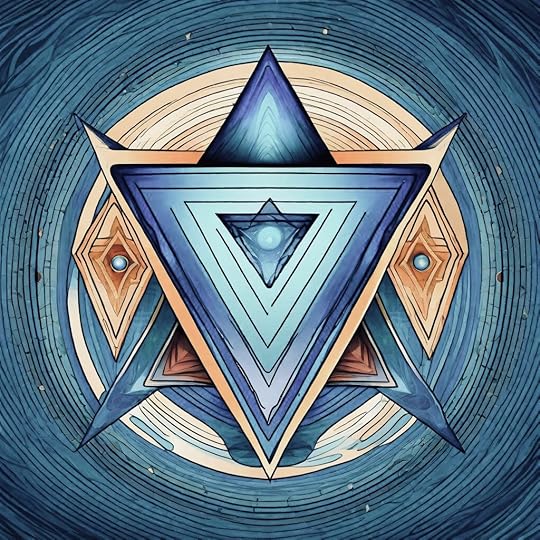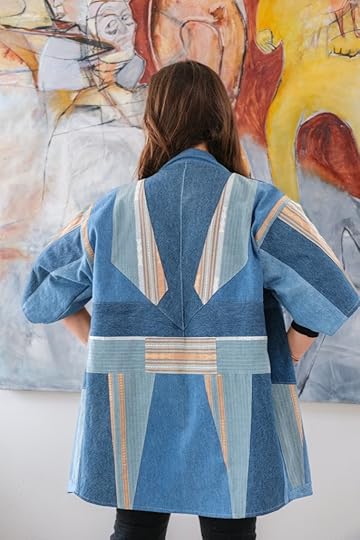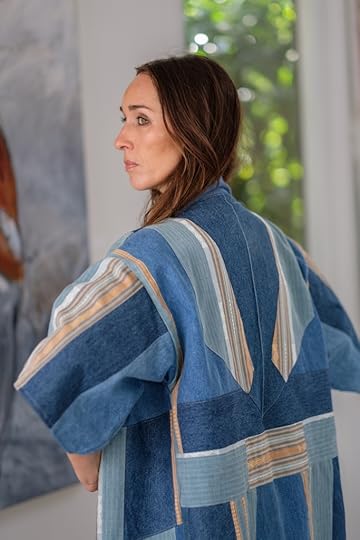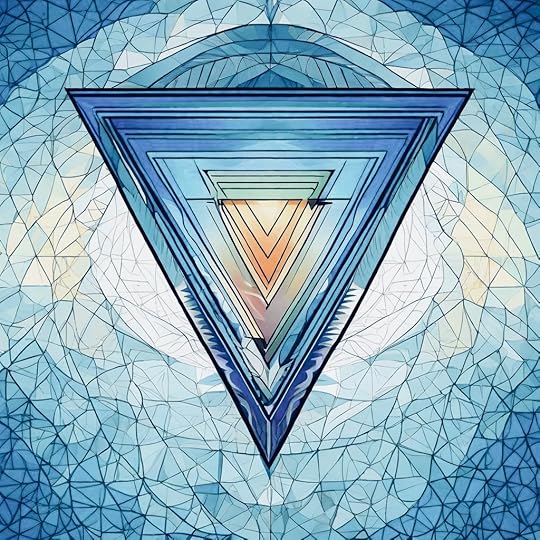The Om of a Kimono
What does the mantra ‘Om’ have to do with a kimono? Let me share a story.
Ketut. It was Ketut who guided me into connecting the dots through the most surreal experience in my life: a plethora of ancient instrumentation guided to heal the soul. I never anticipated the influence a gong bath would have: it brought me into a deep state of relaxation where I began to see a kaleidoscope of visions. A colour which particularly stood out was indigo that also represents the sixth chakra. Ketut, who also happened to be a local priest in Ubud, Bali, blessed me by applying a few rice grains between my eyebrows, while simultaneously chanting a few sounds that for all I know were ancient mantras. In Balinese culture, placing rice on the forehead signifies life and the opening of the third eye: a powerful place in the human body where energy is concentrated: ‘’People have neglected their internal worlds, just breathe, everything you want is within you’’ he told me.
Just as individuals have lost touch with their internal voice, the hunger for fostering a deeper connection to our roots grows bigger. One way of manifesting it into reality is promoting balance in our emotional centres, or what most of us know as ‘chakras’. Awakening our authentic selves is an intricate dance, which essentially involves a rebirth of extinct values and a rebalance of the energy flow. If we think of this as awakening our authentic selves, fashion also needs to take on the path of breathing life into faded values. The yin to this yang is handcraft.
‘’The kimono is made to be worn by anyone who is attracted to it.’’ In order to fulfil its purpose, it needs a human body that can bring life into it. We often perceive garments and material culture as soul-less, when in fact they should be discerned as soul-ful. In order to shift this paradigm, fashion needs to be deconstructed and constructed in a new way. And then it hit me: is it only me who notices the resemblance between the silhouette of the kimono and the symbol used to illustrate the third eye chakra?


If we imagine the kimono as a representation of the human body, then the seven chakra centres are interpreted as the building blocks, each of which needs to be reconstructed if we want to build a resilient way of living.
Clothing, in its essence, represents a basic need: we need it to cover our naked bodies. If we think of this as a shield to the human body, it becomes our shelter. This sense of grounding corresponds to the first chakra: the root chakra. If we reimagine for a moment this energy centre, it signifies a sense of belonging. Just as we know our origins, it is equally important to look into where garments come from.
In other words, this shift would rebalance the root chakra of fashion. In this case, the intricate textile of the Biru kimono comes from a small village called Pringgasela in East Lombok, Indonesia. Rescued from a Balinese second hand market in Tabanan, discarded jeans have been rejected by previous owners and welcomed by Southeast Saga. This creative expression to otherwise forgotten garments carries a key message that can correlate to the sacral chakra. The second chakra governs emotions. When blocked, creativity becomes unbalanced and this is crucial if we look at it from the perspective of rapidly shifting trends.
However, when balanced, it promotes creative expression, which here is translated into upcycling cast-off products. A colour that stands out as an accent to the Biru kimono is orange, which interestingly enough is the colour that corresponds to the sacral chakra. Breathing life into material culture is a collective effort which is all about inclusion.


Southeast Saga’s kimonos are a collaboration between natural dye makers, Indonesian craftswomen and seamstresses, as well as a Scandinavian heritage with a commitment to conscious living and enduring aesthetics. Each ‘nourishing mosaic’ is unique, which unlocks a deeper level of authenticity. Charging clothing with a conscious human touch is a celebration of usage, as it implies that roughness, unevenness and irregularity may be experienced and are all integrated into the concept. This is a direct link between one’s sense of personal identity, which is actually the basis of what corresponds to the solar plexus chakra. Just as it is considered the powerhouse of the human body, an aesthetically resilient object is the powerhouse of fashion. Such an item encompasses material, physical and sensuous stories: the time that has been put into the object, the conceptualizing and constructing, as well as the time meant to be spent using the object.
By awakening this sense of connectedness to the world, the receiver becomes one with the object they wear: here the heart chakra is balanced. The key to awakening the heart chakra of fashion largely lies in phenomenology: understanding the story behind a designed object means gaining insight into contexts, connections and essentially re-attachment to our physical surroundings. Would all these connotations be known to the general audience unless communicated properly? We are so used to consuming that we rarely look for intention behind clothes. In order to set a message across, transparency is key and this is where fashion struggles the most today. The ‘throat chakra’ of design language needs a serious unblocking. In its essence, this energy centre is responsible for expressing oneself, while also hearing and being heard. Southeast Saga proposes a new way of looking at transparency to fashion. It isn’t solely about knowing where your clothes really come from and who is behind the product. It is more about understanding that if you want an artisanal object that tells a story, you need to wait for it to be manufactured especially for you.
Speaking of awakening our inner wisdom and listening to our intuition, the Biru kimono spoke to me the most. I always believed in signs, so I guess I was drawn to this particular kimono due the indigo shades I saw during my sound healing. ‘Biru’ also means ‘blue’ in Balinese, and blue is the colour of the third eye chakra. Here, I find correlation that subconsciously drew my attention to the so-called ‘third eye’. This is the energy centre where we create our own meaning to life and it acts as our internal compass. Resilient items would not be called resilient unless placed value into. And the way to place value is by charging it with our own meaning, besides the already given one. Thus, we become one with the object and we build a deeper emotional attachment to the garments we wear.
Ketut was right. In order to build a resilient way of living, each individual imbues and charges material culture with their own interpretations. Those are deeply rooted in their experiences, emotions, stories and values. Rebalancing our internal energy centres stimulates a flow that undoubtedly translates into the physical world. Seeing the colour indigo was the trigger that led me into looking at the meaning behind chakras and I became interested in how I can apply this knowledge in material culture. Did you notice how the Biru kimono is primarily blue, the colour of the ajna? If the third eye chakra of fashion is handcraft, then rebalancing the flow of the rest of the energy centres would follow. ‘’Just repeat the sound ‘om’ every time you need to find your balance,’’ Ketut told me. He was once again right, if you really look at it, you will also find the ‘om’ in kimono, you just need to change your perspective.
This article is written by Mila Nedkova, one of my amazingly talented former students.
A bit about Mila, in her own words:
Dear reader,
People generally introduce themselves as their job title or their degrees. However, let me introduce myself a bit differently. I am the daughter of two wonderful people: my mother was a former dancer and my father was a former banker. I am also the younger (and very proud) sister of a lawyer. From my mother I inherited the fire in my soul and my father passed on to me his stubbornness.
My favourite book as a child was Pippi Longstocking. Likewise, I grew up to be an old soul, an endless dreamer and a recent discoverer of a spark I promised myself to follow. People often tell me I live in my own universe and with this I must agree. My dream is to open up to the world the door to my Villa Villekulla and let fellow explorers take a look into my rebellious mind and tag along my adventures where I share my values in the form of stories. Oh, and before I forget: by conventional beliefs I have a bachelor degree in sustainable fashion design and a master in critical studies of design. I currently work as a fashion stylist and my intention is to make this creative side of me join an intricate dance with writing on real design values. I remember couple of years ago someone told me not to do it and think twice about writing. But I am the stubborn daughter of a dancer.
And, an additional intriguing detail: guess what I named the house my family and I recently finished building here in Bali? Yes, you’re right: Villa Villekulla.
We are all connected, through our thoughts and actions. Our pasts encounters and interactions are intertwined with our present manifestations and sentiments. I am grateful that Mila reached out to me and am looking forward to our collaboration.



